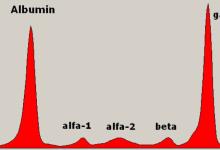Increased Cardiovascular Risk with Gout Save

Most patients who present with gout to rheumatology clinics are at very high risk of cardiovascular (CV) disease, Spanish researchers found.
In a cross-sectional study assessing the CV risk profile of gout patients at presentation, "two out of every three patients with gout were classified at a very high CV risk at presentation, comparable to having already suffered from a myocardial infarction," Mariano Andrés, MD, of the Hospital General Universitario de Alicante, and colleagues wrote online in Annals of the Rheumatic Diseases.
In addition, almost half of the patients who underwent carotid ultrasound had atheroma plaques.
The findings support optimizing preventive strategies in this patient population, "such as intensive statin therapy or stricter lipid level targets," the team said.
Initial consultation and risk factor scoring determined that 40.1% of gout patients recruited for the study had a very high CV risk, which increased to 67.9% among patients who had carotid ultrasound performed.
For the study, the investigators enrolled 237 patients with gout, more than half of whom were referred from the emergency department to a rheumatology clinic. They underwent a structured CV consultation, and 92.3% had at least one CV risk factor. The researchers then applied the Systematic Coronary Evaluation (SCORE) and the Framingham Heart Study (FHS) risk score to all patients. Patients with a very high risk at enrollment because of prior CV disease, diabetes mellitus with complications, or severe renal failure did not have a score calculated.
CV risk was stratified according to 2011 European guidelines:
- A SCORE 1% is considered low risk
- A SCORE of 1% to 4% is considered moderate risk
- Having uncomplicated diabetes, an estimated glomerular filtration rate (eGFR) of 30 to 59 mL/min, intima media thickness (IMT) on carotid ultrasound >0.9 mm, or a SCORE of 5% to 9% is considered high risk
- Patients with prior CV disease, carotid atheroma plaques, diabetes with complications, eGFR 30 mL/mi, or a SCORE >9% were considered to be very high risk.
Eighty-eight patients were considered to be at very high risk at presentation; the risk prediction tools were applied to the remaining 149 (62.9%).
The average risk scores were 3.8% with SCORE and 6.3% with FHS, both equivalent to a moderate risk. Seven patients had a SCORE above 9% (very high risk). CV risk classification after risk prediction tools were applied showed that 95 patients (40.1%) were classified as being at very high risk and 55 patients (30.4%) were classified as moderate risk.
Carotid ultrasound was performed in 142 patients (59.9%) not initially classified as being at very high CV risk. Carotid ultrasound revealed increased IMT in 64 patients (45.1%, 95% CI 36.8%-53.3%) and the presence of carotid atheroma plaques in 66 (46.5%, 95% CI 37.8%- 54.2%), which were bilateral in 27 patients (19%, 95% CI 12.5%-25.5%). Forty-four patients (31%) showed both increased IMT and atheroma plaques on carotid ultrasound.
After carotid ultrasound assessment, the risk of 80 patients was upgraded to very high (one from low risk, 42 from moderate risk, and 37 from high risk). Final CV risk stratification differed significantly from the initial stratification (P0.001), such that 67.9% (161/237) of the patients were finally considered to be at very high CV risk, up from 40.1% of those classified as very high risk before carotid ultrasound.
From this study and others, "the prevalence of carotid plaques in patients with gout appears greater than the general population and similar to other chronic inflammatory diseases such as rheumatoid arthritis or systemic lupus erythematosus," Andrés and coauthors said.
The estimated area under the curve for discriminating risk was 0.711 for SCORE and 0.683 for FHS scoring, indicating a moderate discriminative capacity of risk tools for predicting carotid atheroma plaques. Although risk assessment tools are recommended for identifying patients at risk, "considering their low accuracy to detect carotid plaques, they merit cautious use in gout," the authors wrote. "In the present study, tool-based risk level was later upgraded in 56.1% of patients after carotid ultrasound."
Study limitations noted by the researchers included the cross-sectional design and the potential limited generalizability outside the hospital-based rheumatology setting, requiring replication of results in the primary care setting. In addition, there was no control group and the ultrasound sonographer was not blinded to the clinical data.
The authors reported financial relationships with Menarini, AstraZeneca, Savient, Procaps, and Novartis.










If you are a health practitioner, you may Login/Register to comment.
Due to the nature of these comment forums, only health practitioners are allowed to comment at this time.